In the vast and challenging terrain of the Sahara Desert, eleven bird species have adapted to the arid environment, showcasing a diverse array of characteristics and behaviors that define their survival strategies.
From the magnificent Short-toed Snake Eagle to the cryptic Cream-colored Courser, each bird plays a unique role in the delicate ecological balance of this extreme landscape.
As we delve into the lives of these avian inhabitants, we unveil the intricate adaptations that enable them to thrive in one of the harshest environments on Earth.
This exploration sheds light on the resilience, resourcefulness, and essential ecological contributions of these eleven bird species in the Sahara, highlighting the remarkable interplay between life and environment in this arid expanse. Stay focused.
11 Birds in the Sahara Desert
Birds in the Sahara Desert contribute significantly to the ecosystem’s balance. They aid in seed dispersal, control insect populations, and serve as indicators of environmental health.
Through their diverse foraging behaviors and adaptations to arid conditions, these birds play an integral role in sustaining the delicate ecological equilibrium of the Sahara, promoting biodiversity and resilience.
From the striking White-crowned Wheatatear to the majestic Short-toed Snake Eagle and the elusive Cream-colored Courser, each bird species plays a vital role in the intricate tapestry of this arid landscape.
1. Common Ostrich
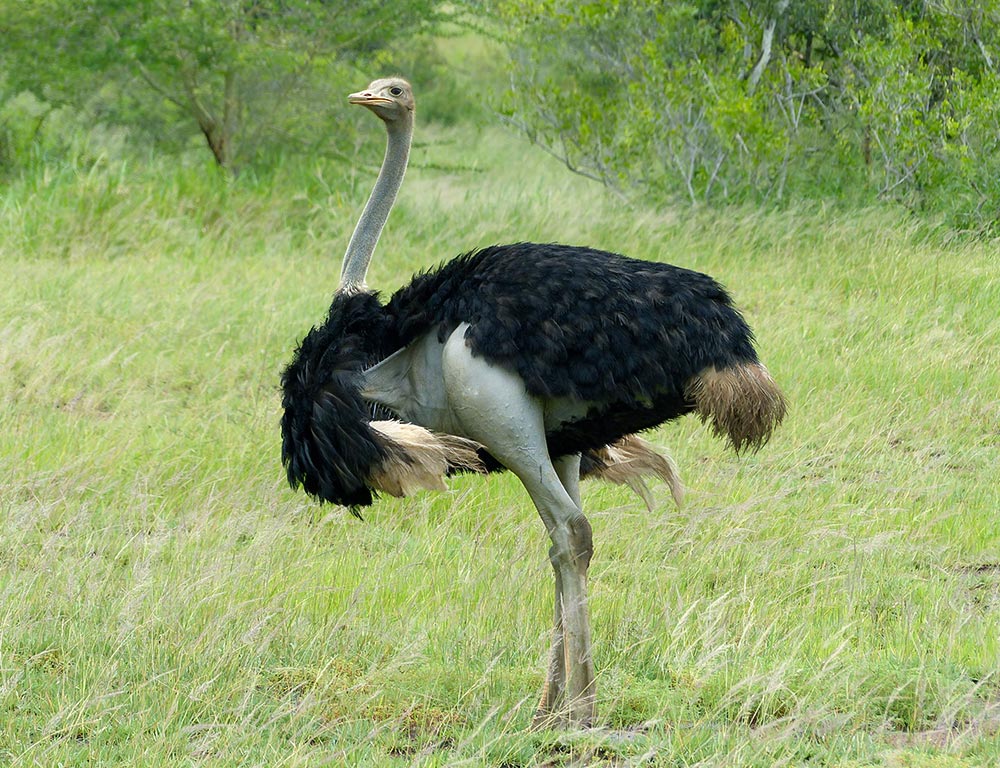
- Scientific Name: Struthio camelus
- Life Span: 30-40 years
- Size: 8.2 to 9.8 feet tall
- Weight: 220 to 290 pounds
- Food: Omnivorous, mainly seeds, plants, insects, and small vertebrates
- Wingspan: 6.6 to 9.8 feet
- Status: Least Concern (IUCN)
The common ostrich, native to various regions in Africa including the Sahara, is a large flightless bird characterized by its long legs and neck.
In the Sahara, these birds adapt to the harsh environment by foraging for vegetation and small animals. Ostriches are social creatures and often travel in flocks.
They have a remarkable ability to run at high speeds, serving as a defense mechanism against predators. During the breeding season, males perform elaborate courtship displays to attract females.
2. Desert Sparrow
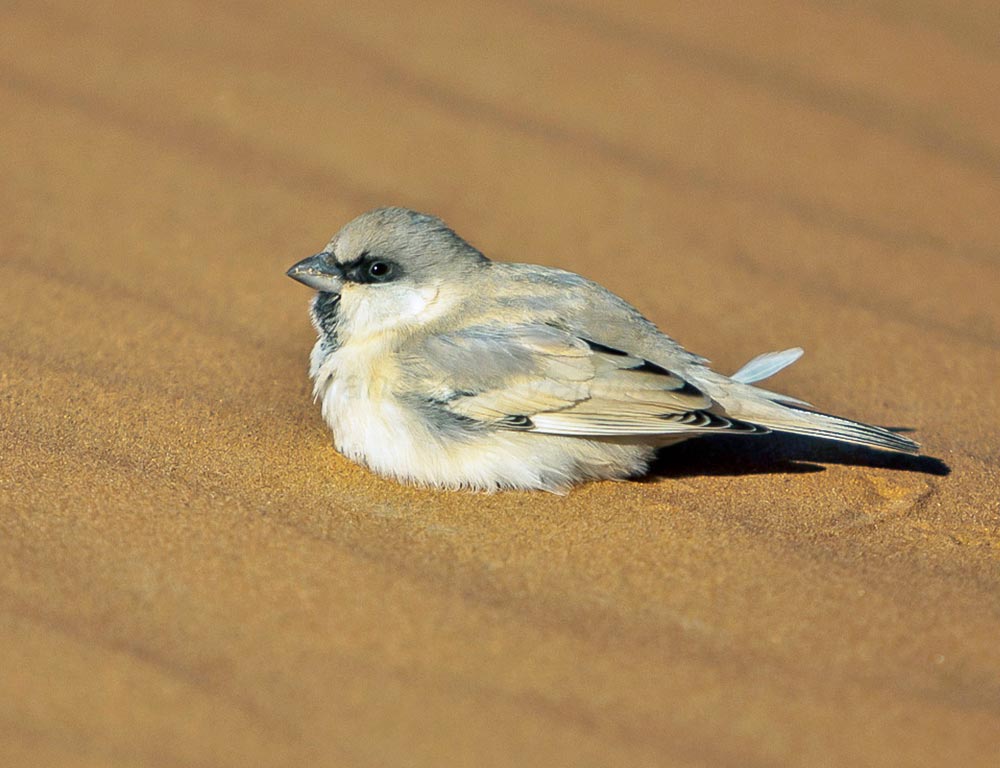
- Scientific Name: Passer simplex
- Life Span: 3-4 years
- Size: 5.5 inches
- Weight: 0.6 to 0.9 ounces
- Food: Seeds, insects
- Wingspan: 8.3 inches
- Status: Least Concern (IUCN)
The desert sparrow is a small bird well-adapted to arid environments. With a predominantly seed-based diet, they have a remarkable ability to extract water from their food, allowing them to thrive in the Sahara.
Their social nature leads them to form flocks, and they build cup-shaped nests for breeding.
Desert sparrows are agile flyers, navigating the vast desert landscape in search of food.
3. Desert Lark
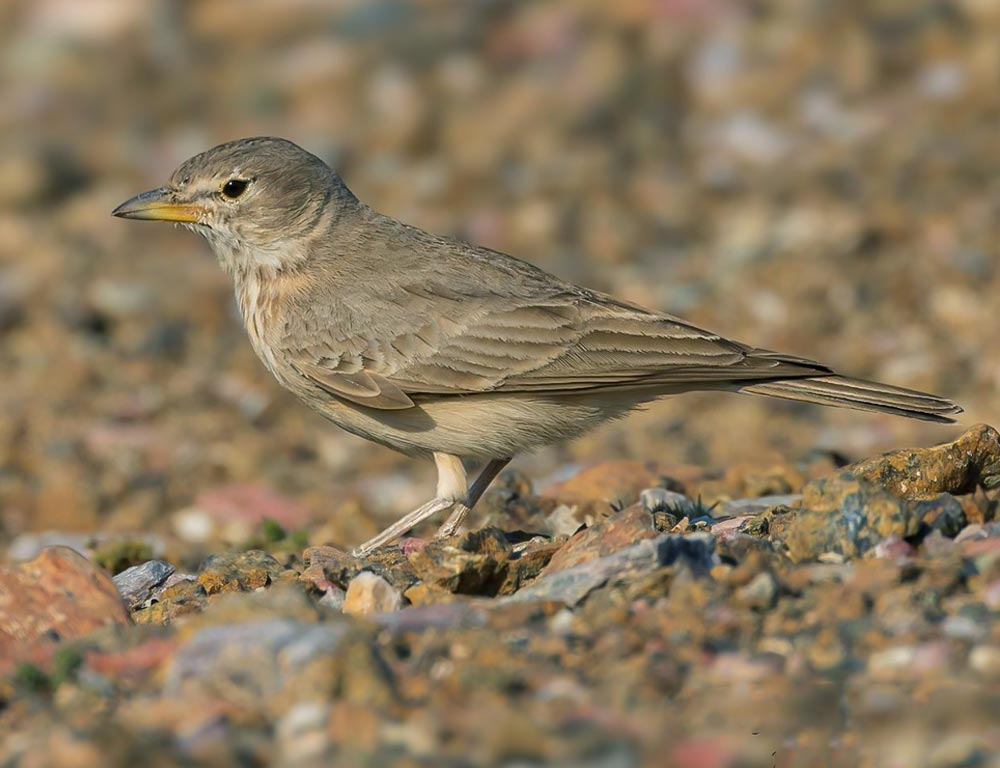
- Scientific Name: Ammomanes deserti
- Life Span: 2-3 years
- Size: 5.5 to 6 inches
- Weight: 0.6 to 1 ounce
- Food: Seeds, insects
- Wingspan: 9 to 9.8 inches
- Status: Least Concern (IUCN)
The desert lark is a small passerine bird adapted to the desert lifestyle. With a cryptic plumage, they blend seamlessly into the sandy surroundings.
Their diet consists mainly of seeds and insects, and they often forage on the ground.
These birds are known for their distinctive song, which plays a crucial role in communication within their small family groups.
4. Bustard
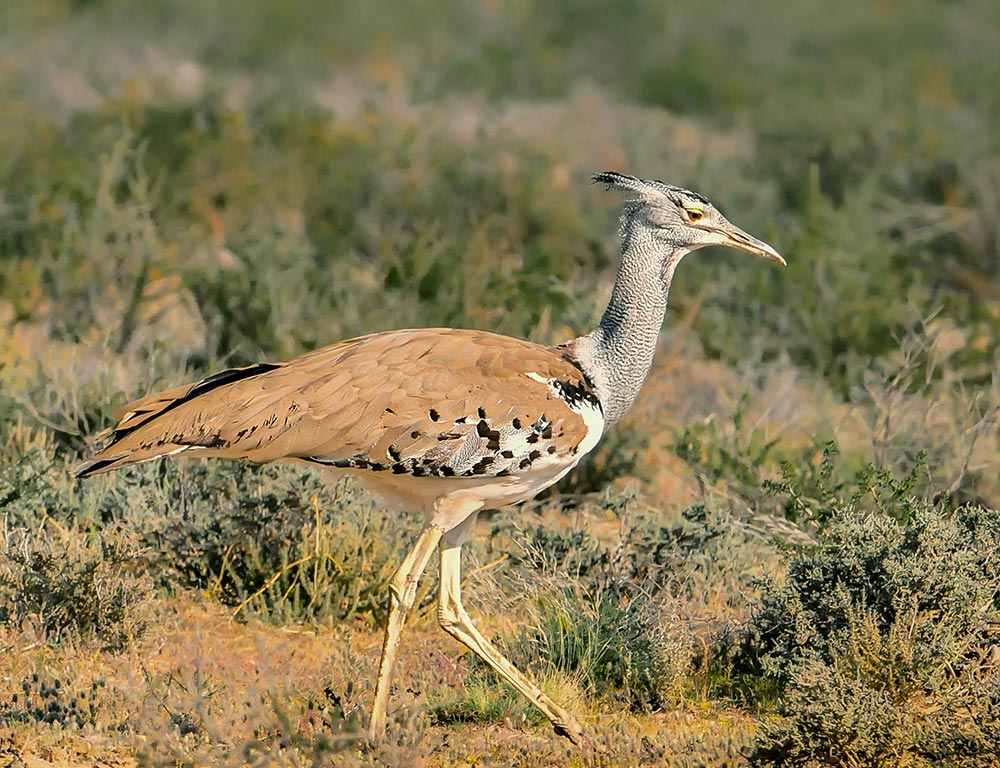
- Scientific Name: Various species (e.g., Houbara bustard – Chlamydotis undulata)
- Life Span: Varies by species (typically 10-15 years)
- Size: Varies by species (e.g., Houbara bustard: 24 to 28 inches)
- Weight: Varies by species (e.g., Houbara bustard: 3 to 6 pounds)
- Food: Omnivorous, feeding on seeds, plants, insects, and small vertebrates
- Wingspan: Varies by species (e.g., Houbara bustard: 5.2 to 5.7 feet)
- Status: Varies by species (e.g., Houbara bustard: Vulnerable)
Bustards are a diverse group of large, terrestrial birds found in the Sahara. They are well-adapted to the arid landscape, using their strong legs for running and their wings for short bursts of flight.
Bustards are opportunistic feeders, consuming a variety of food items. Due to their size and ground-nesting behavior, they face predator threats and habitat loss.
Conservation efforts are critical for protecting bustard populations, especially those facing vulnerable status like the Houbara bustard.
5. House Bunting
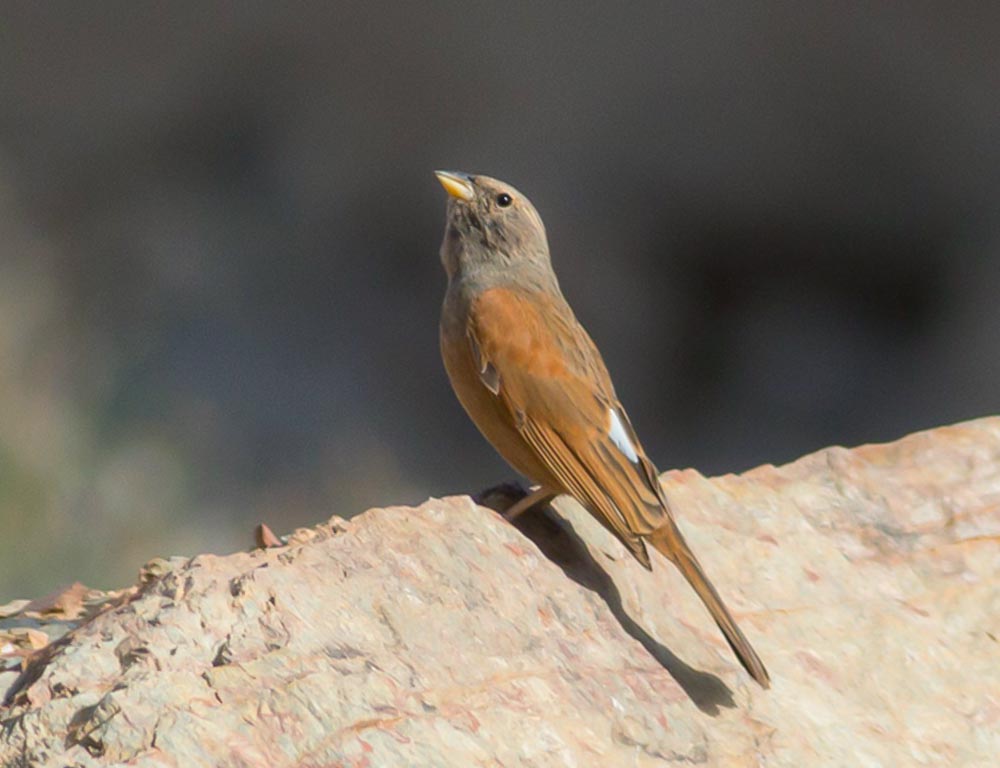
- Scientific Name: Emberiza sahari
- Life Span: 2-4 years
- Size: 5.5 to 6 inches
- Weight: 0.6 to 1 ounce
- Food: Seeds, insects
- Wingspan: 9.1 to 10.2 inches
- Status: Least Concern (IUCN)
The house bunting is a small, colorful bird well-suited to the desert environment. Its diet primarily consists of seeds and insects, and it often forages on the ground.
House buntings are known for their distinctive chirps and trills, and their plumage provides effective camouflage among the rocks and sand.
They may form small flocks during the non-breeding season, displaying social behavior.
6. Crowned Sandgrouse
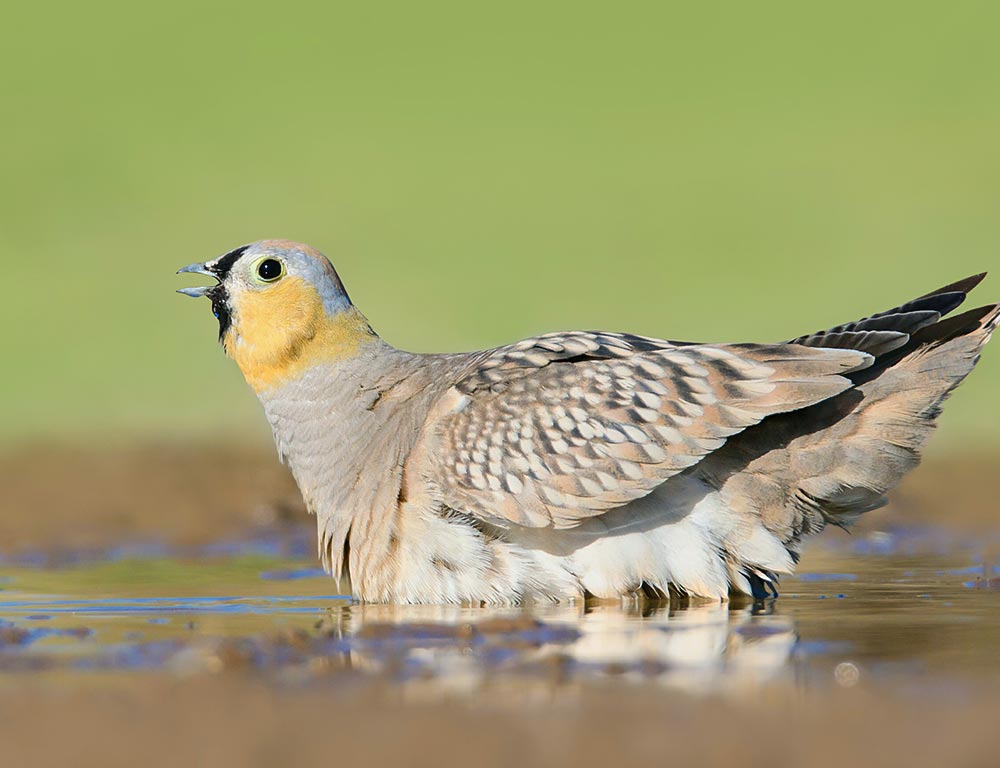
- Scientific Name: Pterocles coronatus
- Life Span: 3-5 years
- Size: 12 to 16 inches
- Weight: 8 to 16 ounces
- Food: Seeds, green vegetation
- Wingspan: 24 to 28 inches
- Status: Least Concern (IUCN)
The crowned sandgrouse is a medium-sized bird adapted to arid environments. These birds have specialized feathers that allow them to transport water to their chicks in feathers soaked at water sources.
Their diet mainly consists of seeds and green vegetation, and they are often seen in pairs or small groups. Crowned sandgrouse are ground-nesters, laying their eggs in shallow scrapes.
7. Brown-Necked Raven
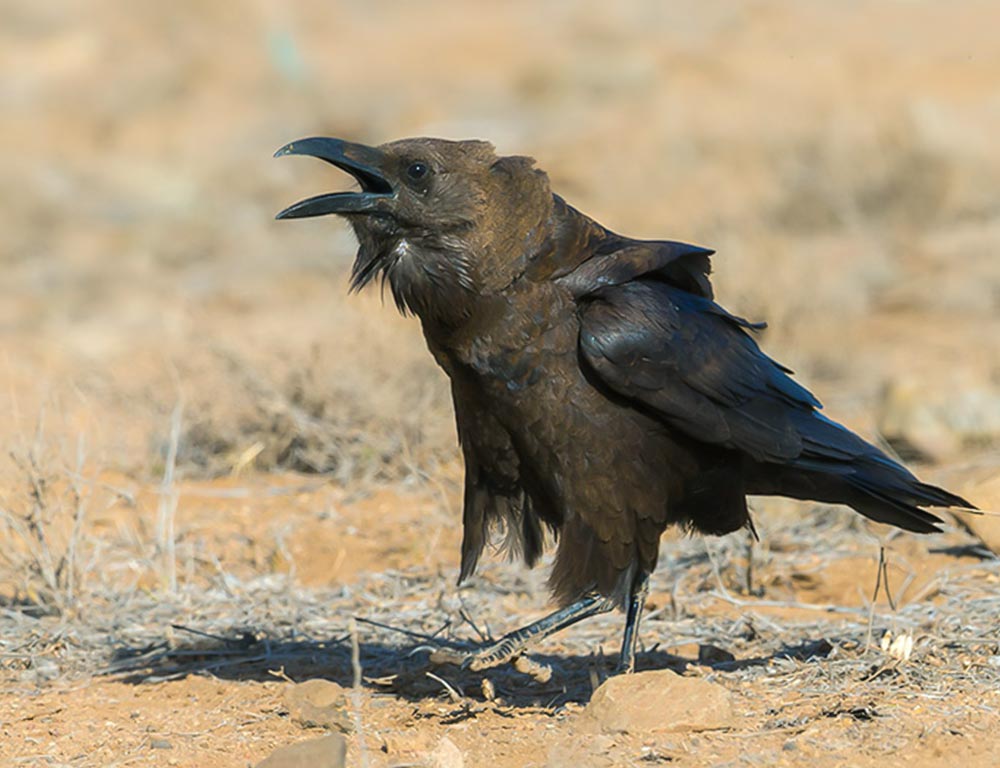
- Scientific Name: Corvus ruficollis
- Life Span: 10-15 years
- Size: 21 to 27 inches
- Weight: 1.2 to 2.6 pounds
- Food: Omnivorous, feeding on carrion, insects, and plant matter
- Wingspan: 45 to 49 inches
- Status: Least Concern (IUCN)
The brown-necked raven is a large, intelligent bird well-adapted to desert life. They have a varied diet, including carrion, insects, and plant matter.
Brown-necked ravens are often seen in pairs or small family groups and are known for their opportunistic feeding behavior.
Their distinctive calls echo across the desert landscape, and they are highly skilled at using thermals for soaring flight.
8. Nubian Bustard
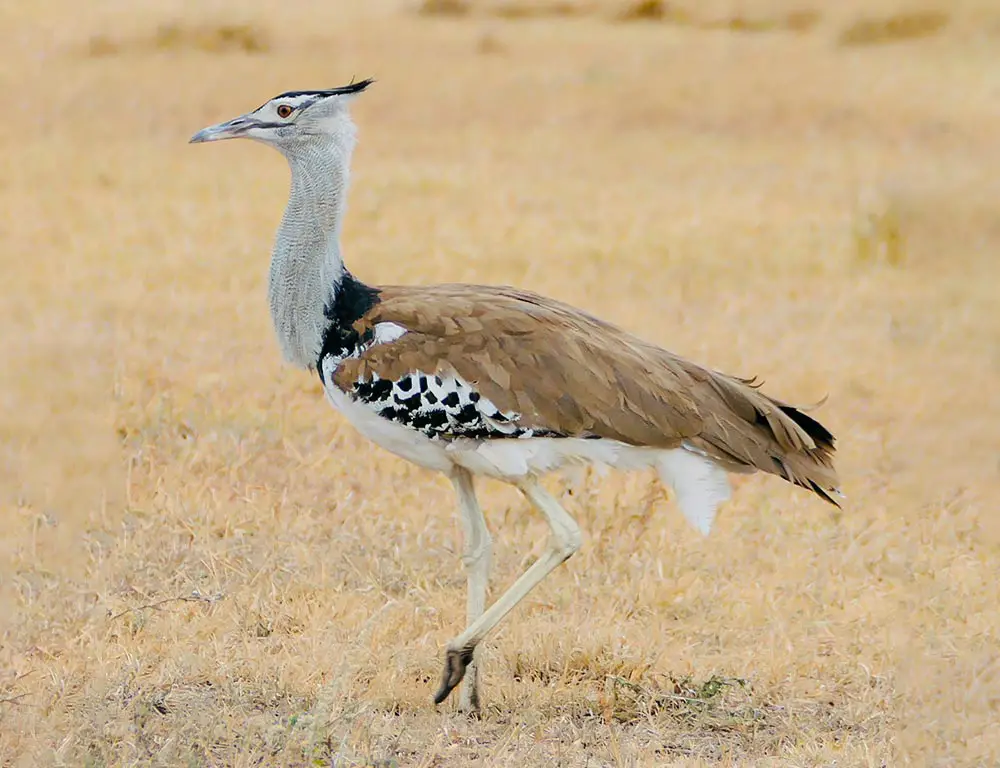
- Scientific Name: Neotis nuba
- Life Span: 10-15 years
- Size: 32 to 37 inches
- Weight: 3.5 to 7.5 pounds
- Food: Grasses, seeds, insects
- Wingspan: 6.9 to 7.5 feet
- Status: Least Concern (IUCN)
The Nubian bustard is a large, ground-dwelling bird found in the Sahara and other arid regions. With a diverse diet, including grasses, seeds, and insects, they are well-adapted to the desert environment.
Nubian bustards are known for their elaborate courtship displays, involving impressive aerial acrobatics and booming calls.
They face threats from habitat degradation and hunting, emphasizing the importance of conservation efforts to ensure their survival.
9. White-crowned Wheatear
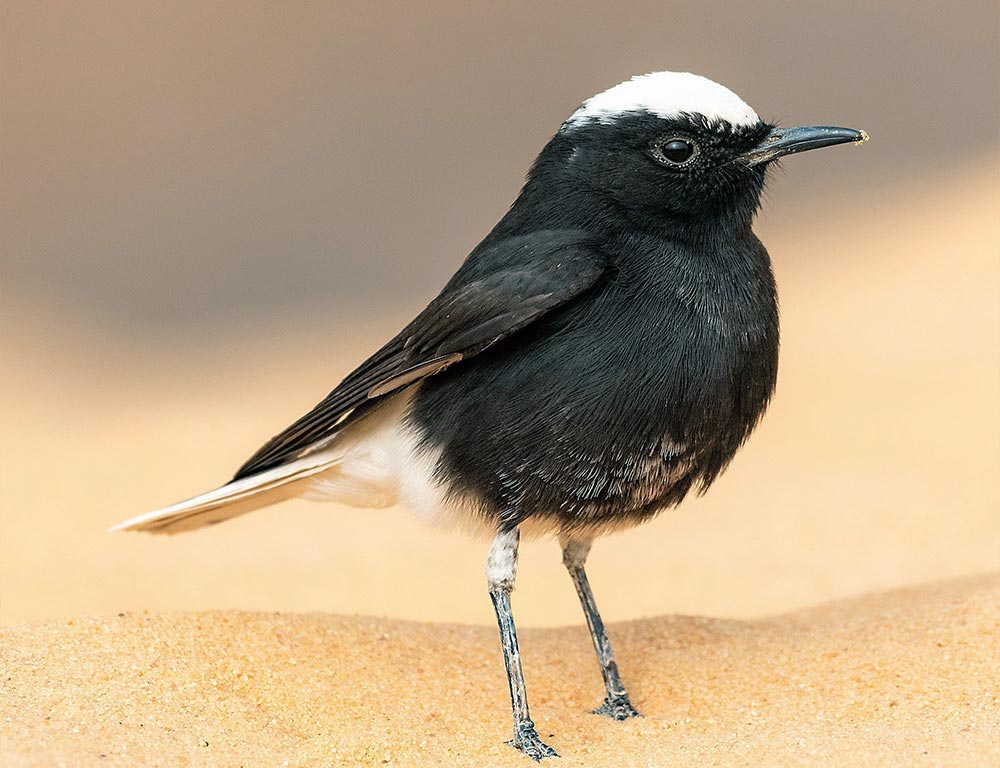
- Scientific Name: Oenanthe leucopyga
- Life Span: 2-4 years
- Size: 5.5 to 6 inches
- Weight: Approximately 1 ounce
- Food: Insects, spiders, small vertebrates
- Wingspan: 9.1 to 10.2 inches
- Status: Least Concern (IUCN)
The white-crowned wheatar is a small bird with distinctive black and white markings, well-adapted to rocky desert habitats. Their diet primarily consists of insects and small vertebrates.
These wheatears are known for their energetic foraging behavior, hopping and running along the ground to capture prey.
They often perch on elevated rocks, providing them with a vantage point to spot potential prey and predators.
10. Short-toed Snake Eagle
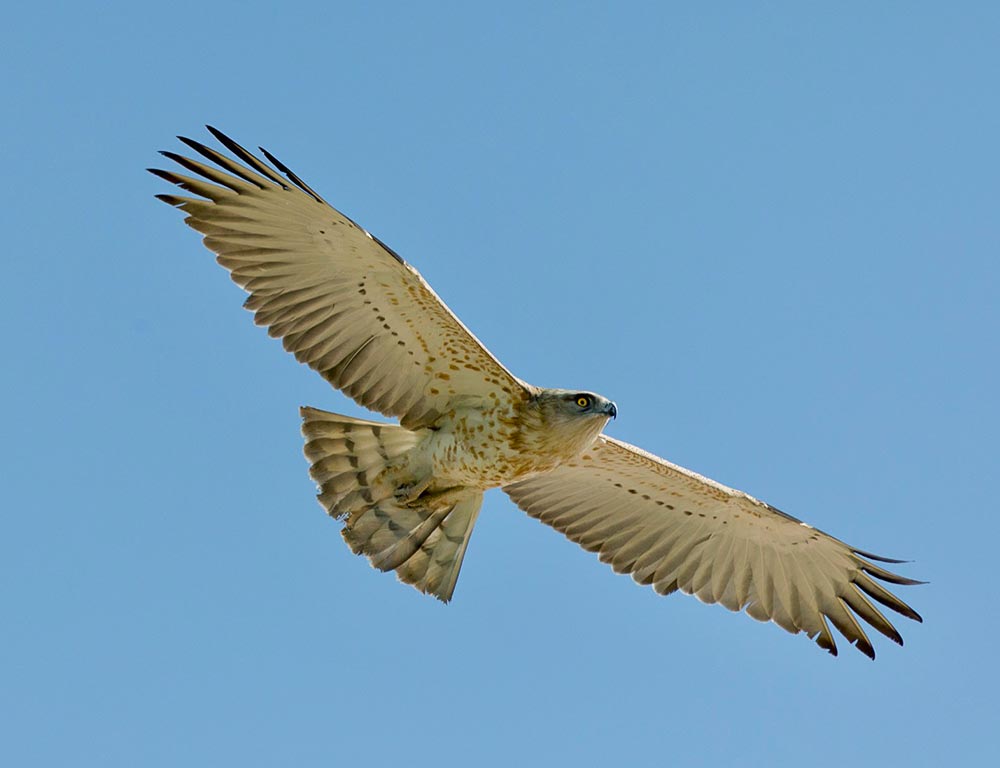
- Scientific Name: Circaetus gallicus
- Life Span: 10-15 years
- Size: 24 to 29 inches
- Weight: 3 to 5 pounds
- Food: Snakes, reptiles, small mammals
- Wingspan: 5.9 to 6.7 feet
- Status: Least Concern (IUCN)
The short-toed snake eagle is a raptor well-adapted to open landscapes, including deserts. With specialized adaptations for snake hunting, they possess powerful talons and keen eyesight.
Short-toed snake eagles soar high in the sky, using thermal currents to search for prey below.
Their diet primarily includes snakes, but they also consume other reptiles and small mammals. They are known for their impressive aerial displays during courtship.
11. Cream-colored Courser
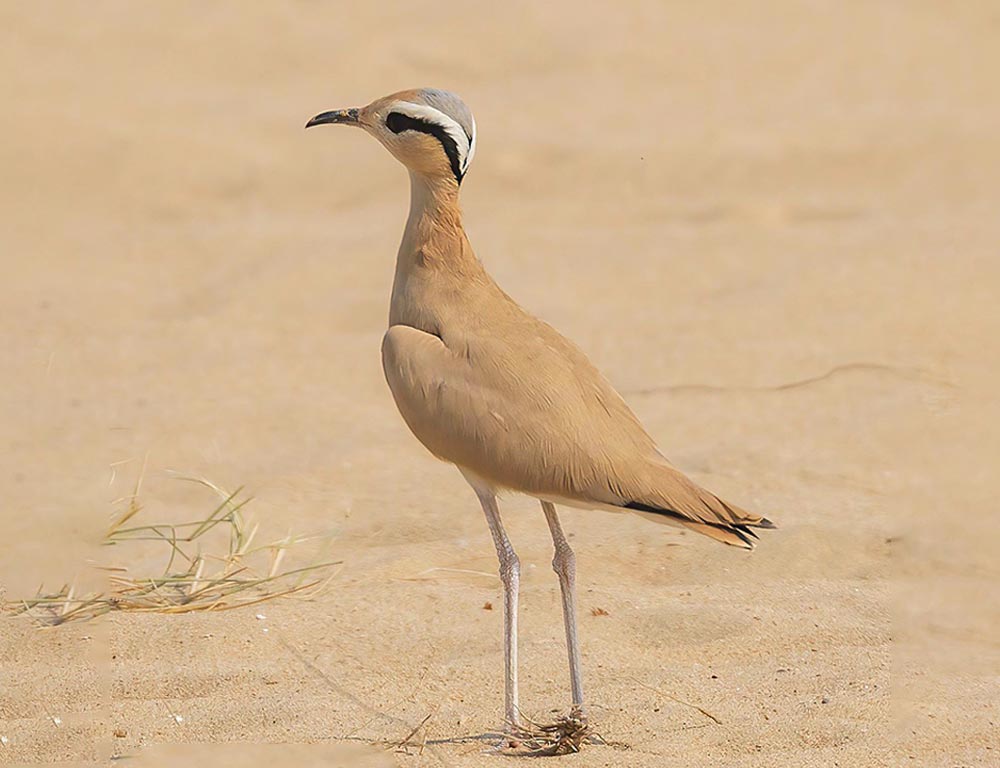
- Scientific Name: Cursorius cursor
- Life Span: 2-4 years
- Size: 9.8 to 11 inches
- Weight: 3 to 4 ounces
- Food: Insects, small invertebrates
- Wingspan: 20 to 22 inches
- Status: Least Concern (IUCN)
The cream-colored courser is a distinctive bird with sandy-colored plumage, adapted to arid and semi-arid habitats.
They have long legs and a slender build, aiding in their ground-dwelling lifestyle. Courses primarily feed on insects and small invertebrates, using their sharp bills to probe the ground for prey.
They are known for their rapid, erratic flights when disturbed and often form loose flocks. Courses are well-camouflaged against the desert terrain, protecting them from predators.
Wrapping Up
In the challenging expanse of the Sahara Desert, birds showcase remarkable adaptations and contribute to the delicate ecological balance.
From the swift movements of the Cream-colored Courser to the soaring majesty of the Short-toed Snake Eagle, these avian inhabitants underscore the resilience of life in extreme environments.
Their roles in seed dispersal, insect control, and environmental monitoring emphasize the critical interdependence of species in this arid ecosystem.
As the Sahara faces ongoing environmental changes, understanding and preserving its diverse birdlife becomes essential for sustaining the region’s biodiversity and ecological health. Thank you very much.